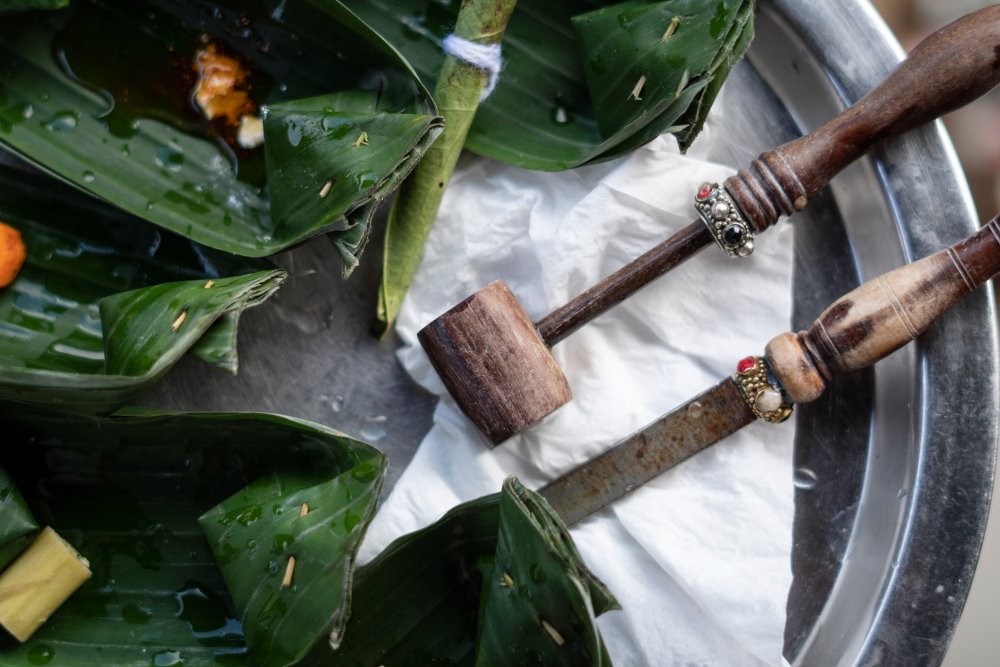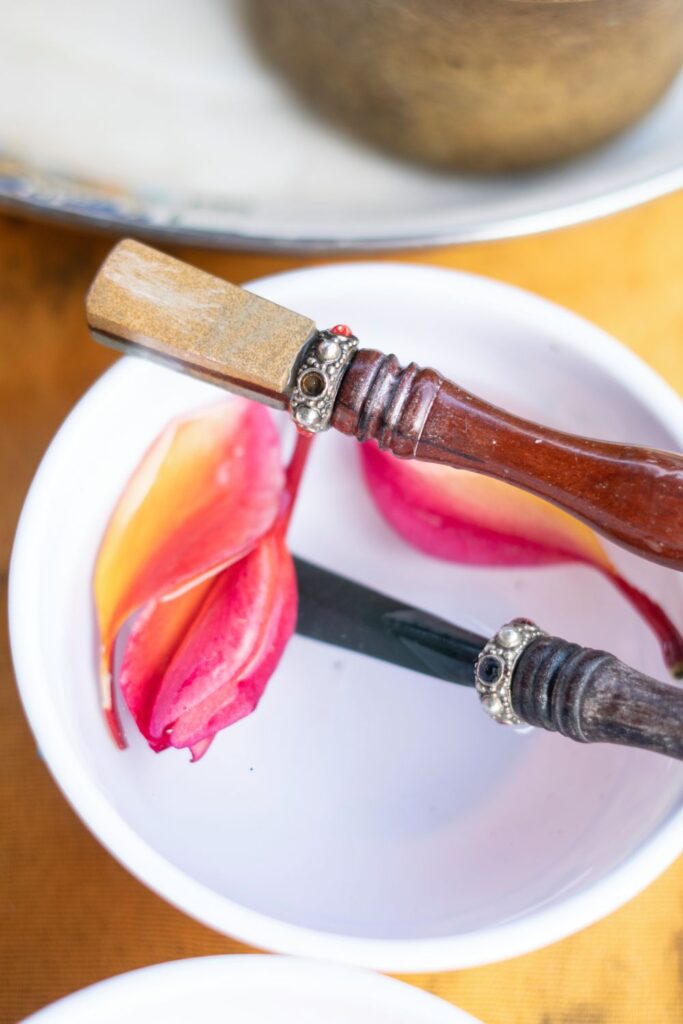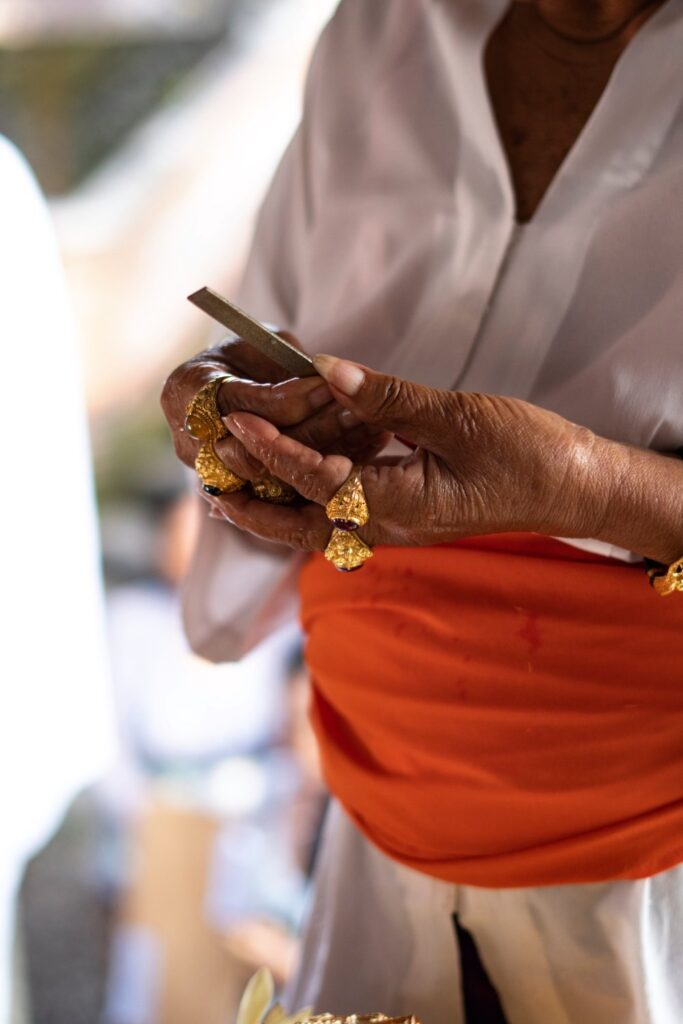
One of the most significant rites of passage for any Balinese Hindu is the tooth filing ceremony, known as metatah, mesangih and for higher castes, mepandes.
The ceremony involves the filing down of the top two canines and four incisors, the ‘fang-like’ teeth which are symbolic of the animalistic tendencies, as people enter the adult stage of their lives. These six teeth, in turn, are further symbolic of the sad ripu, the ‘private enemies’ of human nature which are: kama (desire), loba (greed), kroda (anger), mada (intoxication), moha (confusion) and matsarya (jealousy). Not dissimilar to Christianity’s own seven deadly sins!
During the rite, the participants will lay down on a ceremonial bed, ceremonial rerajahan scriptures are laid upon them, and a notch of sugar can pressed between their molars to keep the mouth agape. Then a sangging priest will begin their work, using the precise tools known as piranti mepandes, to slowly take the edges off the selected teeth.


Four tools are used for this rite: a pahat, or chisel; a semeti hammer made from dap-dap wood; a kikir file; and a sangian, or whetstone, used to smoothen out the teeth at the end of the filing. Each tool is also associated with a specific deity or symbolic meaning, said to ‘provide’ the receiver with traits.
During the process, participants are only allowed to spit into a yellow coconut provided to them. After the filing is complete six flavours are provided to taste which finalises their entry into adulthood.







